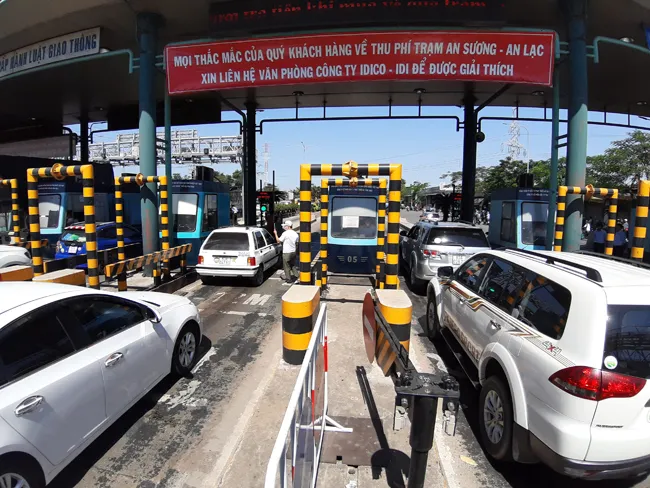
The primary source of funding for these projects was commercial capital borrowed from credit institutions (CIs). However, a notable shift has occurred in recent years, with banks, especially in the case of BOT projects, showing a diminished interest in these ventures. To shed light on this change of direction, Saigon Investment engaged in a discussion with Dr. NGUYỄN TRÍ HIẾU, an expert in banking and finance.
JOURNALIST: - Sir, from 2017 onwards, credit extended to BOT projects has dwindled, signaling a reduced enthusiasm from banks to invest in this sector. How do you interpret this shift?
Dr. NGUYỄN TRÍ HIẾU: - Examining the historical progression, we observe that BOT projects in the transportation sector experienced a peak in deployment between 2011 and 2015. These are long-term projects where investors generate revenue through toll fees, for instance, from vehicles using a privately constructed highway. During the construction phase, businesses involved in BOT projects typically borrow from banks, with international organizations and major credit institutions stepping in for funding upon project completion. This dual assurance, coupled with state participation, emboldened banks to lend extensively, resulting in robust credit growth for BOT projects during that period.
However, several completed BOT projects faced challenges in generating sufficient revenue for repaying debts to banks, coupled with unmet expectations regarding foreign funding. The risks associated with extended loan terms began to materialize, as many projects exceeded financial forecasts, budgets, and capital expenditures. Consequently, since 2016, there has been a decline in the implementation of BOT projects, with banks focusing on disbursing funds for projects committed to previously. Additionally, the prolonged impact of the COVID-19 pandemic led to a reduction in funding from international organizations for large projects. Consequently, many completed projects struggled to secure final funding, resulting in revenues falling short of initial financial plans, thereby affecting the ability to repay bank debts. As per State Bank data, the total outstanding debt for BOT and BT traffic projects stood at VND 92,319 billion by the end of September, with bad debt comprising 3.83% and group 2 debt at 26.52%.
- The Ministry of Transport recently proposed a state support of VND 10,342 billion to alleviate difficulties for eight BOT projects. However, there is currently no legal basis for such support. What is your perspective on this matter?
- For persistently loss-making BOT projects, if the government can afford to repurchase these projects and utilize the funds to settle debts with banks, it would be a positive and prioritized solution to prevent a rupture. Nevertheless, this approach entails investors incurring losses, as they would have to sell these projects back to the government at a reduced price. The Ministry of Finance has responded that there are no regulations supporting this proposal. In the absence of a legal basis for the state to repurchase such private assets, the likely solution involves investors accepting reduced profits and banks accepting lower interest rates. If businesses fail to repay debts, banks may resort to legal action, potentially leading to bankruptcy proceedings and the sealing of assets, causing widespread damage to investors and society. To avoid such a scenario, a negotiation between investors and banks to lower interest rates and extend debt repayment terms is crucial. Both parties need to make concessions to arrive at a mutually acceptable solution, as sticking to the principles of the original contract could lead to enterprise defaults and substantial losses for all parties involved.
- After these recent developments, do you anticipate that banks will continue to invest in this sector in the future?
- While businesses hope for continued support from banks, especially for infrastructure projects, banks are undoubtedly exercising caution. The substantial loan amounts and extended loan terms, reaching up to 10, 20, or even 30 years for BOT projects, pose challenges, considering that banks predominantly mobilize short-term capital. The State Bank has set a roadmap for gradually decreasing the ratio of short-term capital for medium and long-term loans to ensure the system's safety. Strict control of capital in this field is also mandated by the State Bank of Vietnam, a prudent measure creating a secure environment for businesses, banks, and the government, all of which have invested capital in these projects.
While the State Bank of Vietnam emphasizes stringent control, it does not prohibit lending to these projects. Projects with viable plans can still secure funding. However, the issue lies in the fact that interest rates in the BOT sector are often lower than those in commercial lending due to the government's involvement, implying a relatively secure source of debt repayment. Yet, the delayed repayment of debts by many BOT projects indicates that they may not be as secure as banks once believed. Going forward, if capital is injected into a BOT project, interest rates are likely to be higher, at least equivalent to commercial rates, if not higher.
- Thank you very much.




















